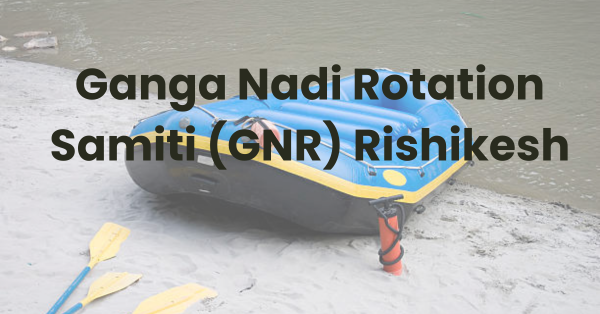Understanding the System: How River Rafting in Rishikesh is Managed
When you arrive in Rishikesh for a rafting trip, you might be surprised to learn that the entire industry is carefully organized. This isn’t chaos; it’s a system designed to ensure safety and fairness. All the rafting companies are part of a governing body known as the Ganga Nadi Rotation Samiti (GNR).
The main purpose of the GNR is to manage and streamline river rafting operations in Rishikesh. This body, a unique blend of government officials and industry leaders, sets the rules for a safe and smooth experience for every tourist. You can think of it as a dedicated department under Uttarakhand Tourism, specifically for river rafting.
The Rise and Fall of the Rotation System
The GNR’s most notable initiative was the “rotation” model, which was designed to distribute bookings evenly among all registered companies.
Here’s how it worked:
- Centralized Booking: When a rafting company received a booking, they were required to report it to the nearest GNR office.
- Serial Allotment: Each company had a unique serial number. The GNR would then assign the customers to the company with the next number in the rotation.
- Equal Opportunity: This system ensured that every company, regardless of its size or marketing reach, got an equal share of the total bookings.
For many smaller, low-performing companies, this was a huge success. It guaranteed them a steady flow of business and revenue. However, some high-performing companies were not happy with this forced equality. To address this, the GNR introduced an option for companies to opt out of the rotation system and operate independently, provided they met certain criteria.
It’s important to note: This rotation system was fully operational only until 2019. After that, a number of companies, particularly the high-performing ones, chose to boycott the system entirely. As a result, companies now work independently to secure their own own bookings.
Standardized Pricing and Quality Control (Continued)
Even after the rotation system was abandoned, a core function of the GNR remains the standardized pricing system. They provide every registered company with a certificate and a fixed price list.
- Fixed Rates: No company is allowed to charge more or less than the set price. This ensures that customers get a fair deal no matter which office they visit, eliminating price wars and ensuring a good margin for all operators.
- Safety & Accountability: The GNR holds regular meetings with company owners to address any issues and fix problems within the system. They have the authority to issue warnings or even ban companies that violate safety standards or operational rules.
Understanding the Tax and Its Use
As part of the regulated system, a nominal tax of Rs. 20 per person is collected on every rafting trip. This tax is paid by tourists at a designated checkpost located at the starting point of the rafting trip. This is why some guides and agents refer to it as an “entry fee.”
The funds collected by the GNR from this tax are distributed to the Uttarakhand Forest and Tourism departments.
While the system is designed to be transparent, there is a known loophole. Company owners are allowed a certain number of “family trips” per month, which are exempt from this tax. Unfortunately, some operators misuse this by charging tourists the tax but pocketing the money and claiming it was a family trip if caught.
In summary, while the rotation system of the past is no longer in practice, the GNR remains a crucial organization that works to keep the Rishikesh rafting scene safe, standardized, and fair. Its existence is a key reason why river rafting here remains a top-tier adventure activity.
Also Read:
- Business opportunities in Rishikesh.
- Which is the best route/section for you at river rafting in Rishikesh?
- Why you can’t register a new company in Rishikesh Rafting ?
Discover more from Raftinggo
Subscribe to get the latest posts sent to your email.
